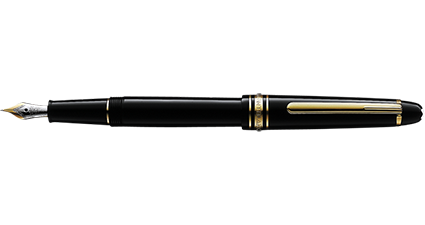 Last Friday’s article in the New York Times (first link below) about the death of Robert Palladino prompted some thoughts about the relationship between the art of lettering and computer technology. The words on the screens of early computers were composed of letters that were easy for a computer to display without much regard — other than screen colors — for the person looking at the computer. Rev. Palladino may have inadvertently flipped that idea, as a young Steve Jobs left his calligraphy classes with the notion that it was important for computers to use fonts that made the user comfortable. Today, web designers are very careful when choosing fonts for the words they put on screens, staying mindful of the lessons learned over the centuries about words on paper.
Last Friday’s article in the New York Times (first link below) about the death of Robert Palladino prompted some thoughts about the relationship between the art of lettering and computer technology. The words on the screens of early computers were composed of letters that were easy for a computer to display without much regard — other than screen colors — for the person looking at the computer. Rev. Palladino may have inadvertently flipped that idea, as a young Steve Jobs left his calligraphy classes with the notion that it was important for computers to use fonts that made the user comfortable. Today, web designers are very careful when choosing fonts for the words they put on screens, staying mindful of the lessons learned over the centuries about words on paper.
- Rev. Robert Palladino, scribe who shaped Apple’s fonts, dies at 83 (New York Times | Margalit Fox) “An authority on the history, structure and aesthetics of scripts from antiquity to the present, Father Palladino taught calligraphy at Reed College in Portland, Ore., from 1969 until his retirement, in 1984. […] Mr. Jobs briefly attended Reed in 1972 before dropping out for economic reasons, but hung around campus for more than a year afterward; during that time, he audited Father Palladino’s class. After helping to found Apple in 1976, he often credited the company’s elegant onscreen fonts — and his larger interest in the design of computers as physical objects — to what he had been taught there.”
- Design reductionism (Essays & notes | Dmitry Fadeyev) “We recognize letters via a process of pattern recognition. Letters will be recognized as letters irrespective of their style or their weight. As long as the shape falls within certain parameters, as long as we catch and recognize certain cues, we can identify the pattern of a letter, we can tell it apart as such. The precise form of a letter is a question of style, and style is a reflection of our own nature, not an objective quality.”
- The science behind fonts (and how they make you feel) (Crew blog | Mikael Cho) “Because fonts are designed by humans, there is usually some meaning attached to them. You don’t want to choose a font that is easily associated with something in our culture that’s markedly different than the vibe you’re trying to give off. The quality of your content is the most important thing but how you present that content by choosing the right font and layout still has its place.”
- What it’s like to design a font from scratch (Fast Company | Rebecca Greenfield) “Despite drawing much of his inspiration from what he calls ‘old-school’ Goudy-style fonts and the book arts, [Steve] Matteson would go on to create some of the most lasting typefaces of the computing age. And, as we enter a new mobile-first, digital-exclusive era of reading and writing, Matteston is also at the forefront of that typeface revolution, designing for major tablet and e-reader makers. While recreating the alphabet from scratch sounds like an increasingly difficult task—by now, you’d think that every possible permutation of legible letter shapes has already been created—Matteson sees more opportunity than ever to design new, better fonts.”
Articles from Ohio Web Library:
- Evaluating the efficiency of typographic design: Gender and expertise variation. (Cartographic Journal, Feb. 2014, p.75-86 | Rasha Deeb, Kristien Ooms, Valerie Vanopbroeke, and Phillipe De Maeyer)
- Helvetica as a type convention for the youthful and trendy image: A consumer response to designer safe option. (Marketing, 2014, p.50-62 | Uroš Nedeljković, Dragoljub Novaković, Irma Puškarević, and Ivana Tomić)
- The life of <p>. (Print, Fall 2015, p.24-26 | Jason Pamental)


